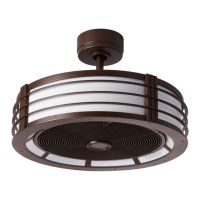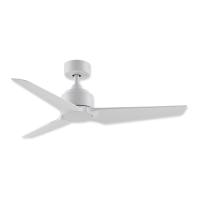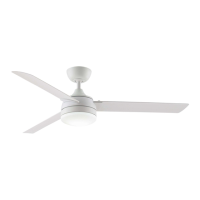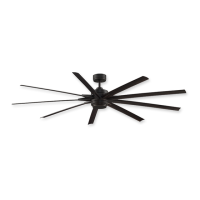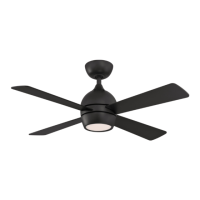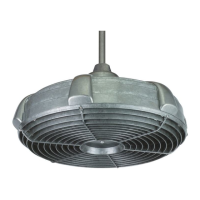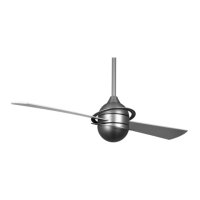Requisitos eléctricos y estructurales
Su nuevo ventilador de techo requiere una línea de
suministro eléctrico con conexión a tierra de 120 voltios de
CA, 60 Hz, circuito de 15 amperios. La normativa eléctrica
requiere el uso de una caja de distribución eléctrica para
ventiladores que soporte el peso extra y el movimiento
asociado a un ventilador de techo. La caja de distribución
eléctrica será etiquetada como tal y soportará un ventilador
de techo de un peso de hasta 70 libras. Dichas cajas varían
en tipos y diseños. Asegúrese d que el tipo de su caja reúne
los criterios para el ventilador que se está instalando. Las
ilustraciones 1, 2 y 3 muestran las diferentes configuraciones
estructurales que pueden ser utilizadas para dicha caja de
distribución eléctrica.
Idea de diagrama de uso de perfil bajo (Figura 1)
La caja lisa de 1/2 pulgada de profundidad será atornillada a
una viga o bloque. Se utilizará si solo un cable va a ser
introducido en la caja. También está disponible en una
configuración de montaje endosado.
2" x 4"
Figura 1
Figura 2
2" x 4"
Idea de diagrama de uso de perfil alto (Figura 2)
La caja de 2-1/4 pulgada será atornillada a un bloque entre
vigas que tenga suficiente espacio para colocar más de un
cable.
Techo
Techo
Vigas del
techo
Vigas del
techo
Caja de distribución
eléctrica
Caja de distribución
eléctrica
5
Energy Efficient Use of Ceiling Fans
Ceiling fan performance and energy savings rely
heavily on the proper installation and use of the ceiling
fan. Here are a few tips to ensure efficient product
performance.
Choosing the Appropriate Mounting Location
Ceiling fans should be installed, or mounted, in the middle
of the room and at least 7 feet above the floor and 18
inches from the walls. If ceiling height allows, install the fan
8 - 9 feet above the floor for optimal airflow. Consult your
Fanimation Retailer for optional mounting accessories.
Turn Off When Not in the Room
Ceiling fans cool people, not rooms. If the room is
unoccupied, turn off the ceiling fan to save energy.
Using the Ceiling Fan Year Round
Summer Season: Use the ceiling fan in the counter-
clockwise direction. The airflow produced by the ceiling
fan creates a wind-chill effect, making you “feel” cooler.
Select a fan speed that provides a comfortable breeze,
lower speeds consume less energy.
Winter Season: Reverse the motor and operate the ceiling
fan at low speed in the clockwise direction. This produces
a gentle updraft, which forces warm air near the ceiling
down into the occupied space.Remember to adjust your
thermostat when using your ceiling fan - additional energy
and dollar savings could be realized with this simple step!
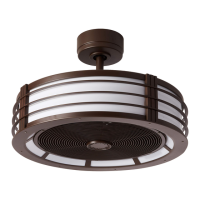
